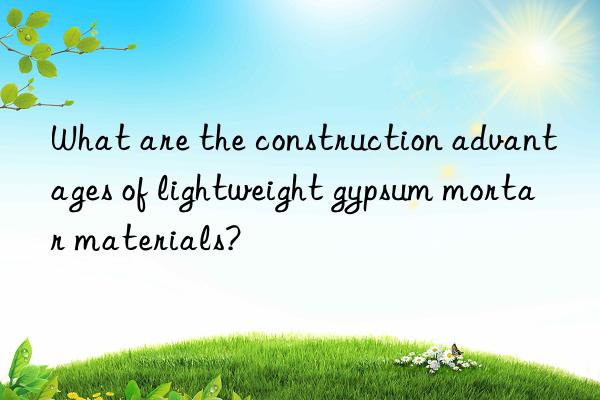
Lightweight gypsum mortar is a new type of wall plastering material that uses semi-hydrated gypsum as the base material and high molecular polymer as the cementing material. It is mixed and stirred by the manufacturer. It is a new type of improved interior wall painting material that changes the traditional habit of using cement-based cementitious materials. It has excellent compatibility and adhesion with various base walls. Compared with cement mortar, plastering gypsum has the advantages of faster construction and shorter setting period. It is more suitable for the thermal insulation of the inside of the exterior wall of the base material such as shear walls, household walls, air-entrained blocks, light sand air-entrained blocks, clay bricks, and the room walls and stairwells of each household wall.
1. Strong adhesion
The good workability and fluidity of plastering gypsum make it The slurry easily penetrates into the gaps and joints of walls or ceilings. After hardening, the volume of the slurry expands slightly, making the plaster layer and the base layer closely adhere to each other. The interlocking ability between the aerated concrete and the plastered surface is strengthened, so not only is there less floor ash and material loss, but it also strengthens the bonding between the two interfaces and prevents shrinkage stress from causing hollowing and cracking due to drying.
2. Good fire resistance
In the event of a fire, plastering gypsum will form after condensation Countless tiny honeycomb holes contain a large amount of water. Under the action of heat, the water is released to form steam, which blocks the spread of flames. At the same time, it absorbs a large amount of heat during the dehydration process, thus improving its fire resistance. .
3. Good thermal insulation
The plastered stone sound hardened body has a porous structure. The pore structure is evenly distributed, and the thermal conductivity is about 0.35W. The thermal conductivity of insulation plaster gypsum is 0.14W, which is close to the thermal conductivity of aerated concrete, which is generally 0.081-0.290W. This helps to avoid the thermal conductivity and heating The hollowing or cracking caused by the excessive difference in air concrete has good thermal insulation and sound insulation properties.
4. Save construction period
The plastering stone layer solidifies and hardens quickly and the maintenance cycle is short , the entire hardening and strength compliance process only takes 1-2 days, and the construction period can be shortened by about 70% compared with cement mortar or mixed mortar.
5. Convenient construction
Gypsum plastering is divided into two parts: the bottom layer and the surface layer. The bottom layer is The lightweight gypsum mortar layer for plastering is mixed evenly with construction sand at a ratio of 1:1.5-1:2 when prepared on site. After adding water and stirring, it can be directly plastered on the wall. The surface layer is pure slurry, just add water. Plastering gypsum plastering has the advantages of being easy to apply, easy to level, easy to repair, low labor intensity, less material consumption, and construction in winter is not affected by low temperatures.
6. High strength
Plastering gypsum has good water retention and workability. Ensure that the strength of the plaster layer is not reduced due to water loss. </p



 微信扫一扫打赏
微信扫一扫打赏
